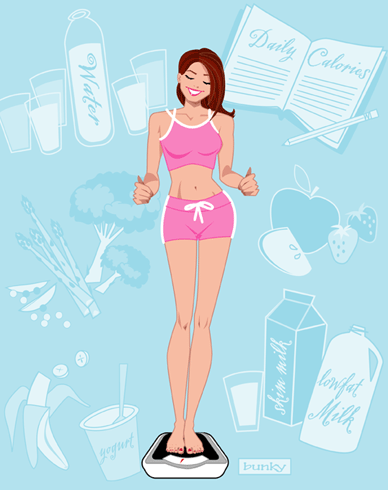Have you ever received or sent an email alerting people that tampons are dangerous? Just take a jump on the Internet, and you'll find a ton of info on the concerns. Info. Legit? You'll have to be the judge.
Here's the conclusion I've come to after researching: We can't know 100% either way. However, the pro-evidence that tampons are safe does seem to tip the scale. I say that with caution. While it appears there have been false rumors zipping in and around cyberspace, one might still wonder.
Here's The Scoop
If you have been out of the loop, you may not have been exposed to email forwards stating that tampons contain dioxin and asbestos. Dioxin supposedly coming from the bleaching of the product. Evidence has come out that dioxin is not supposed to be in tampon products. However, more evidence states that dioxin is in many products because it's in the air. But not in enough quantities to "really" matter according to the FDA.
Off The Trail A Bit
This reminds me of someone I know who works at a certain plant that produces items for a high profile company. The items require chemicals to be used. Of course, they say the chemicals released into the air are at the federal standard requirement. Don't you always wonder about those standards? My friend has been diagnosed with a number of illnesses since working there for the past 10 plus years. Her doctors are concerned it could be the chemicals. She's done her research, folks, and the "standards" on her jobsite do not always suffice the criteria. Too, how do they gauge the standards? Do they consider that we are all individuals? That we are all susceptible at different levels?
My point is, just because a company says they are within the requirements, doesn't mean they are and or that the requirements are safe. Remember we go by "standards" that were set by whom? People we trust? Debatable. We don't even know these people but yet we put our very lives into their hands. without much question.
Again, I'm reminded of a friend's recent visit to Hollister. Funny, I had just been by there and noted that it was so dark that I needed a flashlight. And the music? I needed earplugs. I love music. And I love loud music. But good night, I'd like to be able to hear myself think when I'm shopping, esp during the holidays.
Not long after that, I was told a customer approached a Hollister sales person and asked them if they could possibly turn down the music a little? To which the salesperson called the manager. The manager took no thought as he said, "No, we won't turn it down, we are within OSHA standards." Wow. Can you believe it? OSHA standards to what? Noise pollution? Give me a break. What about just plain old common sense, dude? When a customer is about to buy your store out, what's it to you to turn the freaking music down? grrrrr.
Back to tampons. The FDA states that tampon reports from all the main companies are up to par and are "safe" to use.
Again, I question what they deem as "safe"? Scary. I've seen too many standards come to a deadly crash.
Live Without?
Tampons are a convenience. And for sure we don't want to be inconvenienced. Even if we might die. Remember, even without the threat of dioxin or asbestos killing us, there is still a warning on the label. TSS. Toxic Shock Syndrome. It's real. Have you ever taken the time to read the brochure in your tampon box?
I've challenged young women to read it before using tampons. Now I'm challenging you. And if you are no longer using tampons, you can and should caution other women. At least know the dangers. Be prepared.
Tampon Brochures Warnings
- TSS can rapidly progress from flu like symptoms in a serious illness that can be FATAL. (Tampax brochure)
- The brochures also caution you to use the lowest absorbency.
- Change at least every 4-8 hours. You can wear them at night up to 8 hours. (God forbid you sleep longer).
- Never leave one in before you insert a new one. Don't laugh. Ask you ObGyn how often this happens. I've known many women who forgot to remove the tampon and put another one in. Not good, folks. Some have left them lodged for a long time without even being aware. Except that "something" just didn't seem right. Which called for an unwanted Dr. visit.
- Use tampons only during your menstruation.
Sounds like a lot of warnings.
Other Problems To Consider While Plugging
- Make sure you get it "in" correctly, or it can be heck to pay. Ever been there? Got the T-Shirt.
- TSS is higher in teenage girls and women under 30. Higher absorbency tampons increase the possibilities of TSS.
- Also, noted in the brochure is: You can avoid the risk of tampon associated TSS by not using tampons. Well, duh.
I've known people who had TSS. Not fun times. Thankfully, the girls that I knew were able to overcome the illness, but not without a lengthy recovery. And, yes, they were all teenagers
Honestly, the best idea is to NOT. I don't believe our bodies were designed to be "convenienced" in this manner. Let's face it, if there are risks, and clearly there are, why do we do it? As with most things in our American mindset, we plunge forward into the abyss no matter the damage as long as we are getting our needs met in the moment. instantly.
I have rarely used tampons over the years. Even before the health concerns, I had a sense that they weren't the smartest idea.
So you decide: To Plug or not to Plug. What's it worth?
It's your health.
FOOTNOTES:
FDA: Tampons and Dioxin August 22, 1997; updated June 1, 1998
... Nevertheless, in 1989, FDA requested the four major tampon manufacturers [Tambrands, International Playtex, Personal Products (a Johnson & Johnson company), and Kimberly Clark Corporation] to submit information on the materials and processes used in making their products. Data from all companies showed that dioxin levels were non-detectable or well below accepted levels of risk according to Environmental Protection Agency (EPA) standards. Additionally, EPA in 1990 conducted a risk assessment for dioxins which included tampons and menstrual pads. The assessment found that the lifetime individual cancer risk from these products is extremely small. FDA advised all tampon makers to continue to monitor dioxin levels in their products.
Dioxin isn't 100% controllable.
Explanation? Dioxin is a combustion by-product of many materials. It goes into the air and lands on everything. Accurate-enough testing will find it on everything.
http://www.korova.com/virus/hoax981108.htm
Copyright © 2008 by Pilates Worx 4 Life. All rights reserved. Check out website: www.pilatesworx4life.com






 Enjoy
Enjoy











